Student Blog
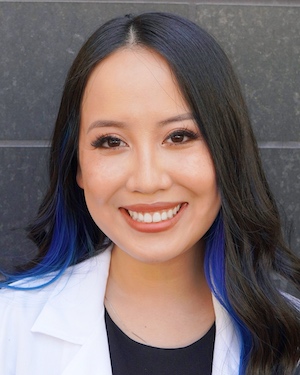
ABC and 1, 2, Three ⟩
December 29, 2021, by Teresa
With the way the Master’s program is set up, there are 3 practice immersions, which is an 8-unit course you take each semester that focuses on a primary area of practice in occupational therapy. The focuses are on adult physical rehabilitation, mental health, and pediatrics. (For the entry-level OTD, there will be an additional practice immersion focused on productive aging and geriatrics!) My entire class is split up into 3 different cohorts of about 40 students and each cohort takes these practice immersions in a different order. I’m in Cohort C, meaning I started the program last year taking pediatrics, adult rehab last spring, and just recently finished mental health this fall. In honor of the third to last day of Blog-mas, I’ll be sharing 3 main takeaways I learned during each of the 3 practice immersions!
Pediatrics
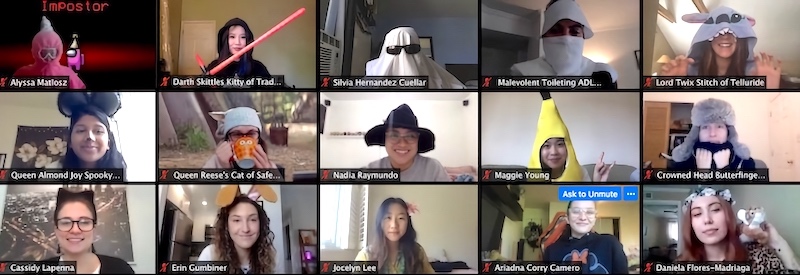
Fall 2020 feels like a fever dream. I miss it, though. *sigh*
- In this immersion, we were introduced to the infamous documentation process. We learned how to take SOAP notes as well as the importance of documentation. Being an OT is not just delivering services to a client — you have to take notes on what you did so you can remember, so that other providers can reference them, and so that you are properly compensated for your services!
- We also learned about how your “client” not only includes the one person you directly provide OT services to, but also encompasses their family and/or support system. It’s important that you include the appropriate people as part of treatment, because they can offer pieces of information which will be vital during the treatment process!
- One of my biggest hesitations about working with children was not being able to speak with them verbally in order to elicit what their needs are. However, we learned about signs and methods of nonverbal communication, many of which apply to adults as well!
Adult Physical Rehabilitation
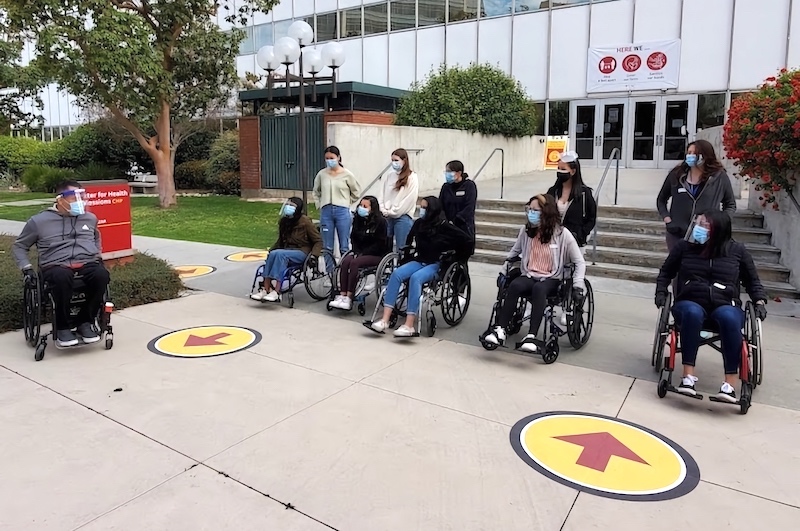
Getting to go on campus once a week for hands-on practice immersion labs and meet my classmates in person during Spring 2021 was such an exciting time!
- In this immersion, we learned about the evaluation process in further detail and how important it is to establish a baseline during your first encounter with a client because it will determine what the rest of their treatment looks like. However, with OT being such a holistic profession, there are so many things you’ll want to know about your client from the start! This immersion is scaffolded so wonderfully and in harmony with the fieldwork experiences that by the end of the semester, you become comfortable with this process!
- Almost every class, we’d hear that the most important thing to remember when working in an adult rehab setting is to “meet people where they’re at” — both physically and mentally. If your client is unable to stand, meet them where they’re at and have a seat yourself — don’t physically talk down to them. Additionally, your clients are the experts of their own lives and the last thing you want to do is have them overexert themselves, so make sure your interventions match their capacities and goals!
- In keeping with that, never assume someone’s capability, identity, or thoughts. Foster an open space to nurture and maintain the therapeutic relationship between you and your client. For example, USC provides us with name badges that include our pronouns (mine are she/her/hers) and the presence of this alone has sparked many important conversations during my fieldwork experiences. Again, they are the experts of their own lives, so check in with them often to make sure their needs are being met.
Mental Health
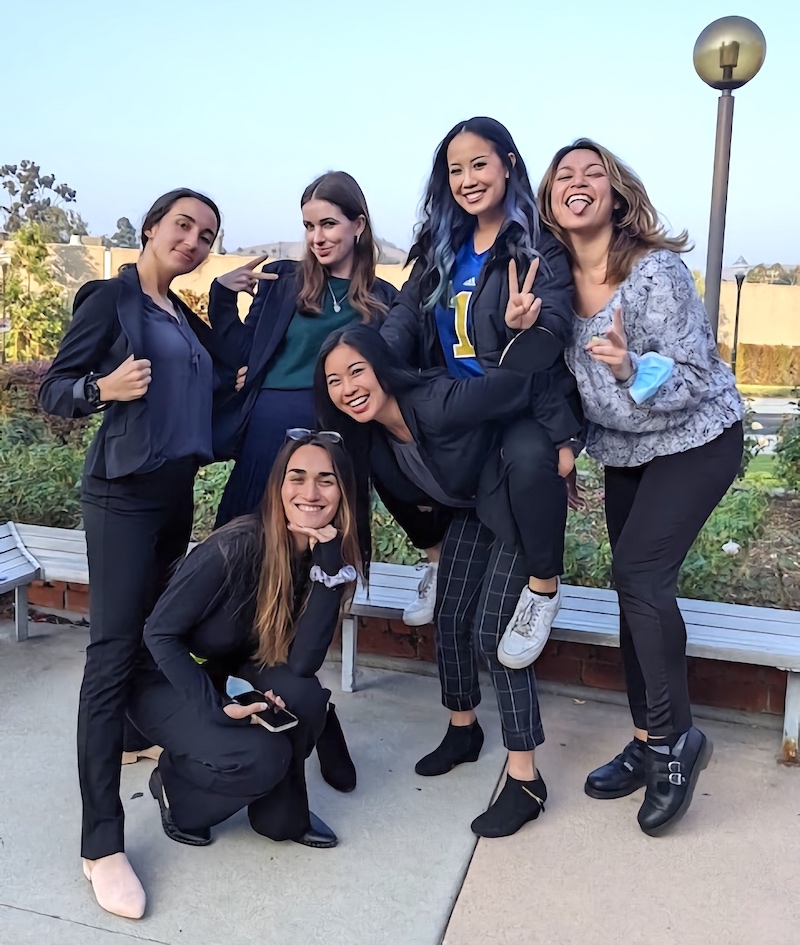
The best Team-Based Learning group to ever exist! Gimme, gimme MORS, gimme MORS, gimme, gimme MORS 😢
- In this immersion, we learned how important it is as entry-level OTs to use standardized assessments correctly as we garner experience and continue to develop our clinical identity. These assessments are founded on evidence-based practice and were developed and researched with a clear purpose in mind to guide the treatment process in a way that is proven to work!
- In certain areas of OT practice, there is also a need for providers to “do whatever it takes” in order to facilitate your client’s recovery which may extend beyond traditional care. While this may sound intimidating, it aligns with the holistic approach of occupational therapy in that it emphasizes how each individual requires unique, individual needs and requires providers to immerse themselves in the process in order to meet these needs.
- Maybe it was because this was our first semester fully in-person, but I was able to truly understand the importance of teamwork within any group setting — from the classmates you sit next to every day, to your cohort, to your entire graduating class, as well as the teams you’ll go on to be a part of as an OT. For any given topic, everyone in a team will offer a different perspective which you might not have picked up on because you, yourself have a different perspective based on who you are as a person and not that any perspective is the right or wrong one, but the collaboration offers a space for boundless solutions.
To end Day 3, I’d also like to feature the 3 cohorts of the Entry-Level Master’s program class of 2022! Cheers to everything you’ve all accomplished in 2021 and here’s to all the memories to be made during our last semester together!
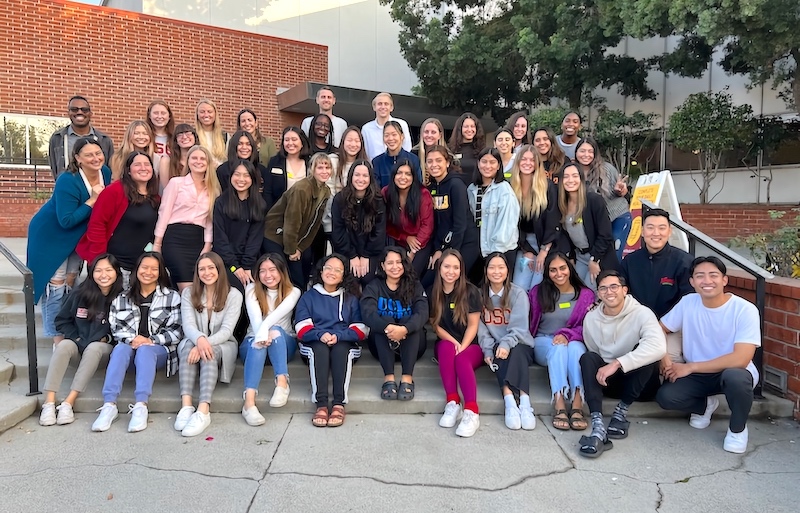
Cohort A (Photo courtesy of Earl Sy)
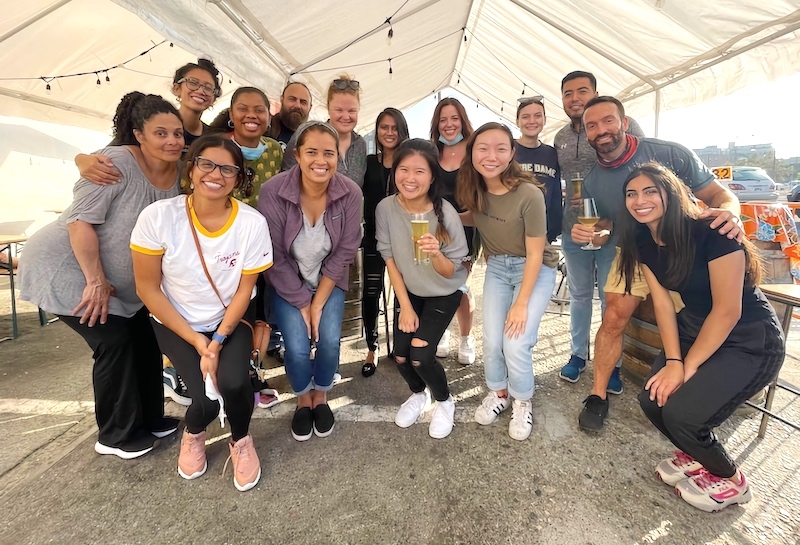
Some of Cohort B (Photo courtesy of Stefanie Kuizon)
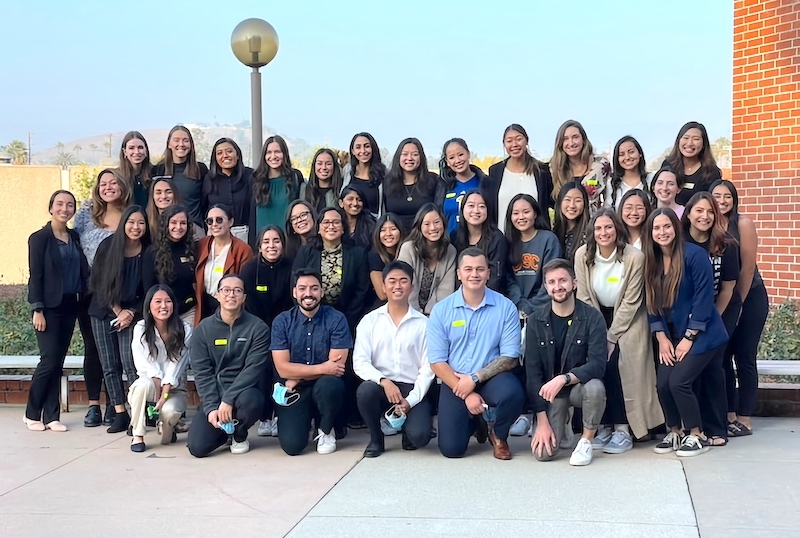
Cohort C (Photo courtesy of Camille Hazen)
I cannot wait to see you all become some of the best occupational therapists this profession has ever seen. ❤️
⋯
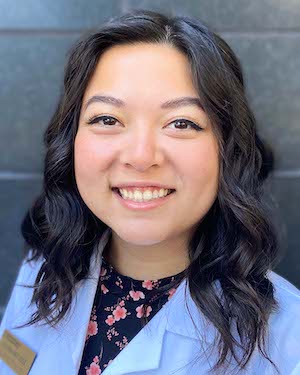
Ranking 4 Tools I’ve Tried to Organize My Life ⟩
December 28, 2021, by Alyssa
I love to organize. I find it so interesting to see how other people organize their daily schedules and to-do lists, so I’ve decided to share my planner tool journey with all of you in two parts. Part 1 (this blog) is ranking my experience with every tool I’ve tried to use in the past few years. Part 2 (coming soon in 2022) will break down my current planner system.
Note: As with any occupation, the method for organizing and planning has to fit the person. This is my personal ranking, no hate to anyone who uses these.
#4 Paper Planners
Coming in absolute last for me is using a paper planner. I really wanted to like using one — I love the ✨ aesthetic ✨ of a nice paper planner. I tried hard to make it work and spent . . . too many dollars in the process. Sometimes buying an organizational tool feels like you’re getting organized, even if you don’t actually use it*. I was convinced I just hadn’t found the right planner set up, so I’d buy another one. This was an expensive self-misunderstanding.
My main qualm with paper planners is the commitment to keeping it with you. Unless I need to bring my laptop somewhere, I never carry anything except my phone. I ended up writing down random notes in my phone to then add to the planner, which was too many steps. In the same vein, I couldn’t check my to-do lists/calendar if I was on the go.
I wanted to color code it and make it pleasing to look at. The thing that got in the way of this was . . . me — (1) I didn’t dedicate any time to it, (2) My handwriting is not neat enough for that, and (3) I’m lucky if I have two pens on me at any time. Forget about carrying multiple colors.
Alas, my dreams of having a #bulletjournal instagram account were for naught. I moved into the acceptance phase of grief and transitioned to trying out digital systems for getting my life together.
#3 Computer Stickies
For two years in undergrad, I kept all of my to-do lists in the Mac built-in stickies program. I set up my stickies with due date lists for each class for the whole semester. I then had one master schedule that I would type out and copy/paste tasks from the other sticky notes. I realized I liked my schedule in list format, and I wasn’t as interested in the visual blocks of time on a calendar.
This solved my issues with my often illegible handwriting, and I figured I needed to be on my computer for most of my tasks. But of course, I couldn’t access my lists without my computer so I was back to making random phone notes when I was on-the-go. I phased this program out when I discovered my current system.
#2 Google Calendar
I keep a Google calendar for a visual of my class schedule, but it never made sense to me for managing tasks. I like to schedule things even if they only take 5-10 minutes, and I couldn’t see the details of those “events” on the calendar without clicking on them.
Nonetheless, I’ve included it on this list out of respect for its interface. Lots of color options, repeating events, cross-device syncing — all beautiful features.
#1 Trello
I live laugh love ride and die by my Trello boards. I was introduced to Trello in a coding class in undergrad for the classic use of “to do” “doing” and “done” lists. As someone whose work style leans toward start-to-finish in one sitting, this workflow doesn’t really work for me. BUT I realized Trello had a lot to offer. I’ll get into it more in my next blog, but in summary, it combines everything I liked about Google calendar and my stickies system. ✨ Stay tuned! ✨
* Since Trello has been by my side for the last 3 years, I sometimes miss the thrill of setting up a new personal organization system. If this resonates with you, I highly recommend playing organizing video games (e.g. Unpacking, Wilmot’s Warehouse) to fill that void 🎮
⋯
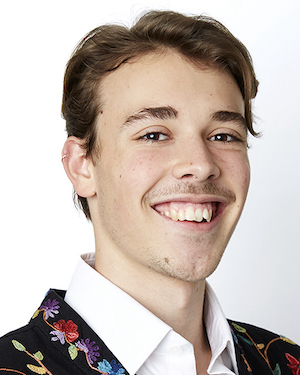
A Few (5) of My Favourite Things ⟩
December 27, 2021, by Seth
It’s the time of the year where time is on everyone’s mind. I mean, it’s kind of hard for it not to be when four days from now many of us will be watching a giant clock countdown to the Gregorian calendar new year. As I prepare for the year to come, I’d like to reflect on the years that have passed, specifically the past five years of the BS-MA program, and share with you all my favourite things from each year. I’ve already shared about my BS-MA cohort, so this will focus on the progressive degree experience itself. As I mentioned before, the program offers you a breadth of flexibility in designing your own experience while also being structured with prerequisite courses before you officially enter the graduate program. With that said, no two students’ journeys are alike.
Year 1: An Introduction to OT and OS
This is where the magic begins! The first year is where, at the very least, you take OT 250 and I cannot imagine a better start to the USC Chan journey. It’s a sort of an all-you-can-eat buffet of OT where you’re exposed to the breadth of what OT brings to the table. This course covers motivational interviewing to lifestyle redesign, flow to challenge-skill balance, stress management to sleep, habits and routines, and much, much more. As a testament to how much I enjoyed this class, I remember the final with Dr. Kate Crowley like it was yesterday. My group was assigned to present on the stress management module and we chose to recreate a traffic scenario one of my group members had experienced. We converted the wheely chairs in the classroom into cars and re-lived the experience in front of the class with classic movie voice-overs to narrate the scene and what was happening in the body. Now that’s how you end your first semester the right way!
Year 2: The Intercampus Shuttle
Depending on the specific way your cookie crumbles this moment may come sooner, but by year two you’re ready for the intercampus shuttle! USC has shuttles that go to many places, but the intercampus shuttle stops at the main campus (UPC), Union Station, and the health science campus (HSC). The shuttle runs about every 30 minutes or so and takes about as long. Believe me when I say, to this day I still love this bus. It’s the perfect time to catch up with your cohort, listen to some music, nap, or cram in some last-minute studying for anatomy or physiology. More than this, it made me feel like a ✨professional!✨ You’re commuting, you’re on a health science campus in the heart of OT at USC, and living the dream. Honestly, they might as well just hand you your degree right then and there (well, maybe not yet, but you’re definitely on your way)!
Year 3: Foundations
Although split between year three and year four, this is when you start taking the graduate-level foundational courses and it is designed in a way that makes the transition so smooth. This year is when you wrap up any double majors or minors so you’re still taking an interdisciplinary course load, but you’re starting to get into the bread and butter of OT at the same time. This time is precious because you take these foundation courses with your BS-OT cohort. Not only are you strengthening those relationships, but you’re also starting to build new relationships with the graduate faculty in a more intimate classroom setting. From the small group discussions and practical applications to the professor interactions, this experience brought everything I learned up until this point into focus and I felt prepared for the next chapter of the program.
Year 4: A Program Within a Program
And the time has finally arrived, you are a graduate student! If that isn’t exciting enough for you, you’ve now also expanded your network of OT-lovers to include 140 more people! Although this may feel intimidating at first, you will be split into a smaller immersion cohort with whom you will travel through the rest of the program. This program within a program includes Mental Health, Pediatrics, Adult Physical Rehabilitation, and the newly introduced Productive Aging and Geriatrics immersions. Year 4 will continue the building on Year 3’s foundations while also guiding you to be responsive, reflective, and engaged in your future practice and giving you a taste of what that practice could look like. This year is so exciting because you start to feel what it’s like to be a real-life OT!
Year 5: The Freedom to Choose
As I am still in my fifth year, I cannot capture it in 20/20 hindsight, but I can share something that I am sure will be my upcoming favourite. Sometimes you just don’t click with a required course which, I’m here to tell you, is not a bad thing! It’s a good sign that you are starting to hone in on the OT you want to be and in year five you get the chance to create your own adventure. When you reach this point in the program, you’re able to start selecting the electives you’d like to take before graduating. These courses can contribute to advanced certifications, enrich your knowledge in a particular practice area, or just help you strengthen your general skills as an OT and you get to choose them! It’s like being a first-year again, but this time you know what you’re looking for. The freedom to choose goes beyond electives, however, and also encompasses your next steps. What type of residency would you like? What practice area will you pursue? Will you seek out any additional degrees? Take some time to reflect on everything you’ve done so far and start asking yourself these questions. The future starts now!
Although I advertised 5 favourite things, in the true spirit of looking forward, here is a bonus sixth favourite thing to celebrate the sixth year of the new BS-OTD!
Year 6: The Last Chapter
The fact that you have to say goodbye makes the journey up to that moment all the more special. Relish each year you have here and carry it, and the people you met along the way, with you as you move forward, but do move forward. You’ve put in the work and you are ready. Here’s to graduation (whenever that may be for you)!
⋯
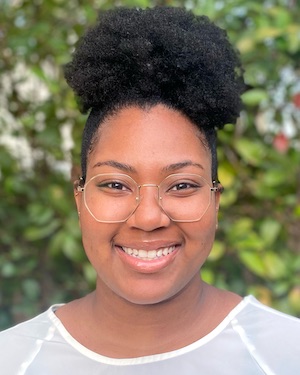
6 Lessons from My First Semester as an OTD Resident ⟩
December 23, 2021, by Kayla
Beginnings and Endings Life Hacks What are OS/OT?
The first semester of my OTD year has come to an end, here are some lessons that it taught me. Let’s get right into it!
1. This is Not The Master’s Program Anymore
As a student in the MA-II program, I became so accustomed to (and honestly, reliant on) the structure; class four days a week and one day for fieldwork. It was so consistent that when I began the OTD and my schedule became so much more flexible it was a bit of a shock. In the OTD program, you have class 1 day a week and all other time is spent engaged at your residency site. Because I spent the majority of my time providing direct patient care, I found myself having to switch my brain from “clinical to classroom” in order to be in the right headspace for group discussions and class participation. I really had to adjust to the new flow of things . . . adapt to my new roles and routines, if you will.
2. You Won’t Feel Overwhelmed Forever
Beginning a new program, moving halfway across the country, figuring out my role as the first resident at my site, studying for boards, and tending to my mental and physical health . . . it was a lot. I remember attending a residency seminar entitled, “What Have I Gotten Myself Into”, where residents currently in their final semester of the program reflected on their first semester and assured us that even though it was going to get hectic, that we would make it through. On the other side of my first semester, about three things I am absolutely sure. First, I was 100% overwhelmed during the first few months of the semester. Second, I was not alone in feeling this way. Third, that feeling does not last forever.
For me, what helped get through the days where it felt like I had too much on my plate was to remember my why. Thinking about why I began on this journey in the first place, understanding how my current responsibilities fit into the bigger picture, and most importantly, taking a deep breath and giving my best effort.
3. Mistakes Are Going to Happen
I am no stranger to making mistakes, but over the course of this semester as I was beginning to come into my role as a new professional I, expectedly, made more than I was used to. I had to learn how to reframe my mistakes in a way that allows for growth rather than feelings of guilt and how to turn thoughts of “Why did I do that?” into, “How can I do better?” Mistakes are a part of the process of learning and I had to learn to be thankful for the new perspective I gained along the way, after all . . . perspective is everything!
4. How To Navigate The “In Between”
As an OTD resident although you are a registered and licensed therapist, you still occupy the role of a student and mentee. This semester taught me how to embrace the duality of the unique position that we as residents are in. I was faced with having to define my role as an OTD resident, especially because my site has never had one before, and learn to be confident and accepting of changes as I encountered them. Biggest takeaway: be confident in the path you’re walking and don’t be afraid to ask for help when you’re unsure of your next step!
5. No Two Residencies Are The Same
This lesson is rather short, sweet, and to the point. Even if you share the same area of practice with another resident, no two placements are alike. Things between residencies may be different, but yours is specific to you and your interests and THAT is what matters. Remember: comparison is the thief of joy.
6. The OTD Really is What You Make It
If you have ever met with me either via office hours or one-on-one, I always harp on this sentiment. This program is what you make it, it is YOUR experience, YOUR vision, and YOUR year. For many of us, there will never be another time in our professional career when our only goal is to observe and to learn as much as we can. It is so easy to get caught up in all of the stress and responsibility (I am by no means exempt from this), that we forget to seek out and enjoy the experiences that come along with this program. This semester challenged me to not only be more mindful and present but to truly stick to the goals I set for myself to make sure that I am taking full advantage of the opportunity in front of me.
As this semester, and year, come to an end I can’t help but look forward to all of the experiences and new knowledge that 2022 holds. More importantly, I can’t wait to share them all with you. Happy Holidays!
⋯
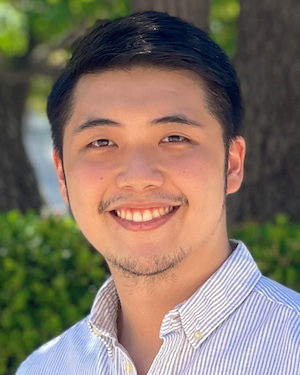
7 BEST Photos from my PP-MA Classmates ⟩
December 23, 2021, by Marvyn
Diversity International Living in LA
In light of the 7th day of Blog-mas, I decided to show off 7 of my wonderful classmates who make our class as unique as it could be. I am so honored to be part of their class, and I figured they needed to be highlighted as well. I asked them what their BEST photo is here in LA so far, and why they think they chose that photo. Check it out!
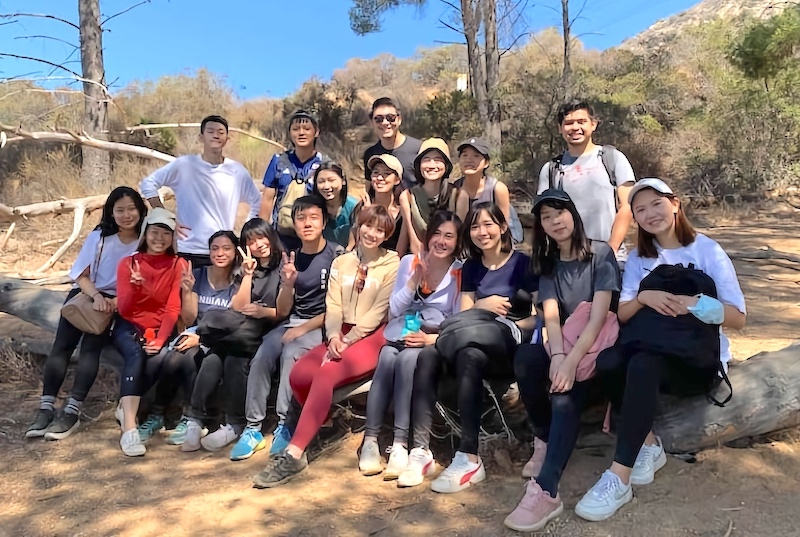
Cindy Teow: “I really enjoy nature, so hiking at Eaton Canyon with my classmates was the highlight of this season for me! They made hiking enjoyable though the hike was tougher than expected. The same could be said for this semester, their cheerful and helpful disposition made this semester manageable.”
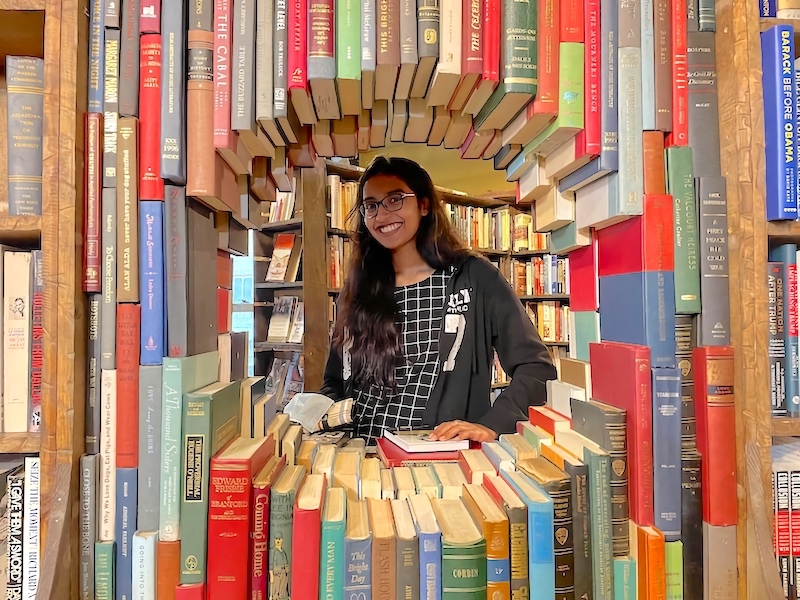
Nandita Raman: “This picture was taken at a place I recently visited place called ‘The Last Bookstore’. It is truly a paradise for book lovers like me. The atmosphere is so warm and cozy, and it brings out the magic of books. This is one of the best places I have been to in LA!”

Tristenne Ocampo: “This photo captures what life has been as an international student in LA — so much life, art, and color! this applies to the food, places, and people I have encountered.”
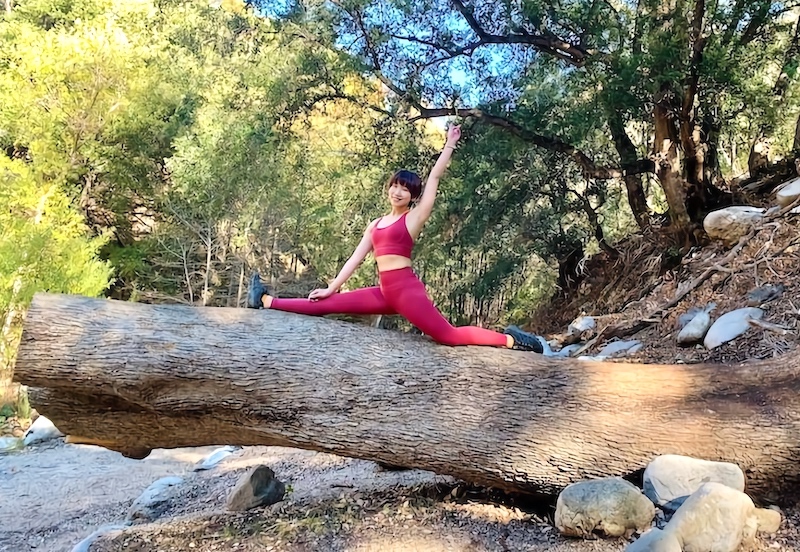
Florence Yang: “Exploring nature, practicing yoga, and taking photos are all things that bring me joy and energy, and this photo encapsulated my most joyful moment. I took this photo while I was hiking through Switzer falls trail with my friends. I love how this trunk was lying beside the trail, which created the perfect spot for a split!”
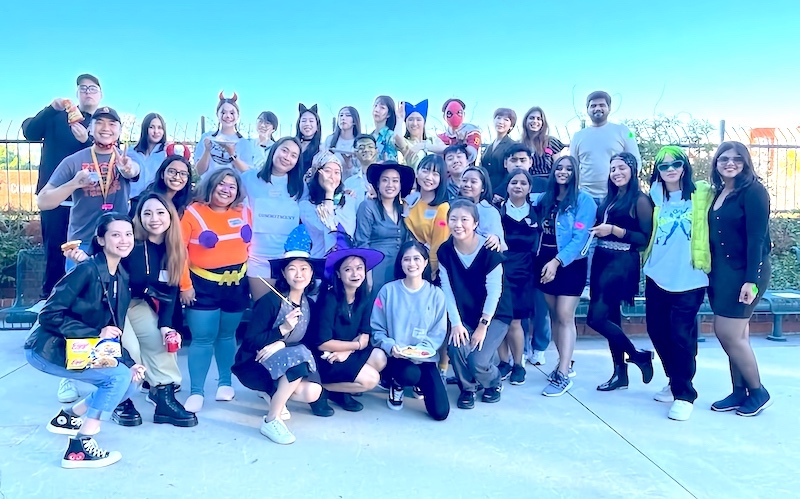
Godfrey Lok: “This photo is my personal best in MA-1. It was taken when we had an Halloween celebration event. All of our class dressed up and we were having so much fun in the patio! Could you tell what characters are we mimicking?”
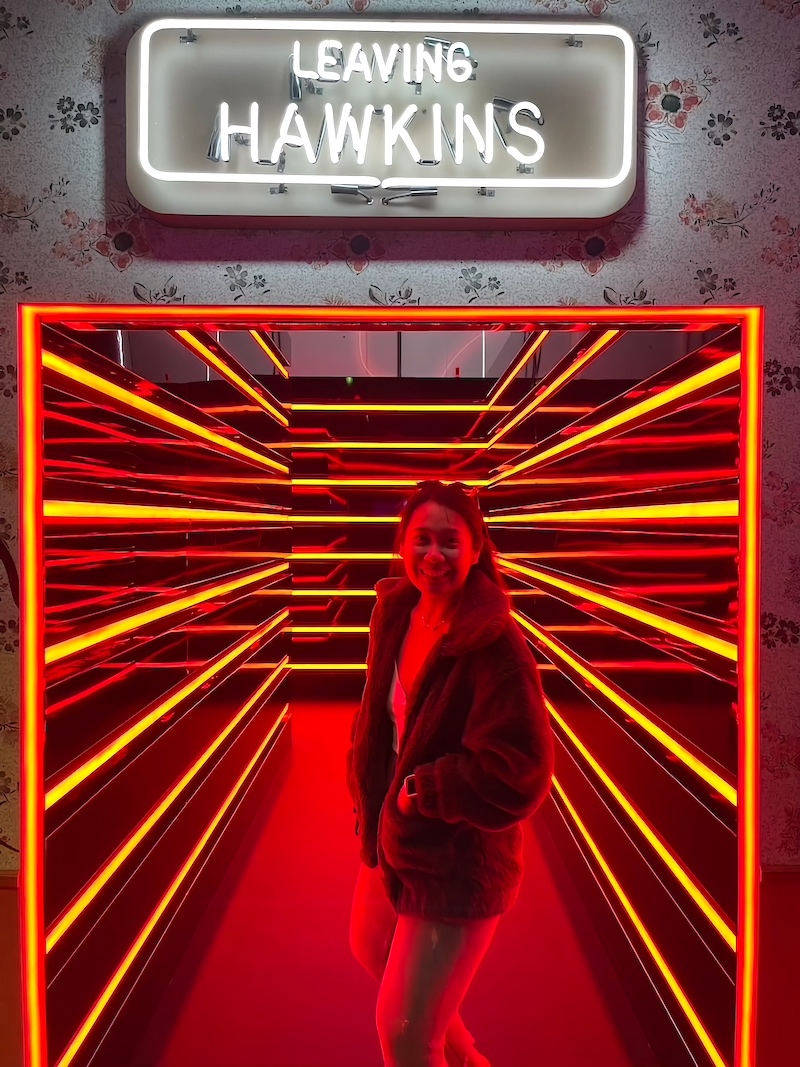
Vanessa Mesa: “This is my best photo because it reminds me of the good days that spontaneity can bring about. Saying yes to last minute events can sometimes turn out to be one of the bests I can look back to!”
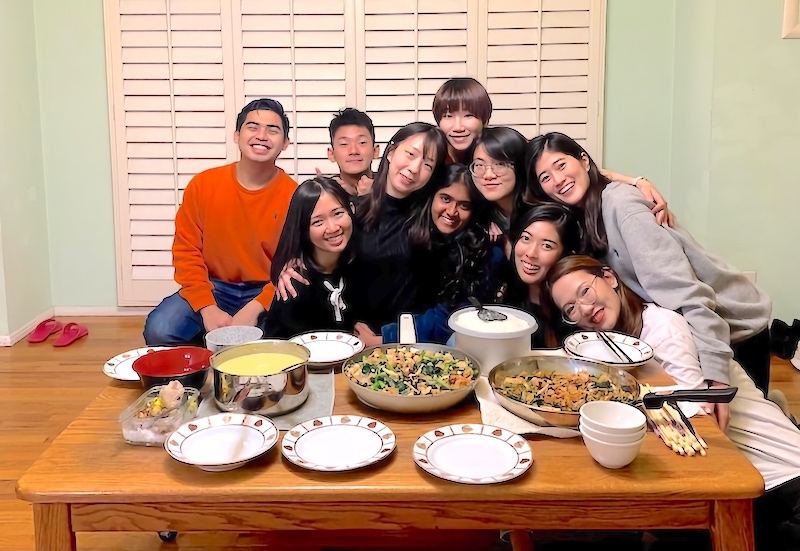
Jean Chen: “My new life in LA has become brighter because of getting to know new friends at USC. We could freely share our ups and downs together. Here we are enjoying a meal at my house.”
I would like to thank my classmates for participating in my blog! Living in LA has been a blast for us, international students, and I believe there will be much more adventures to be found along our journey.
⋯





